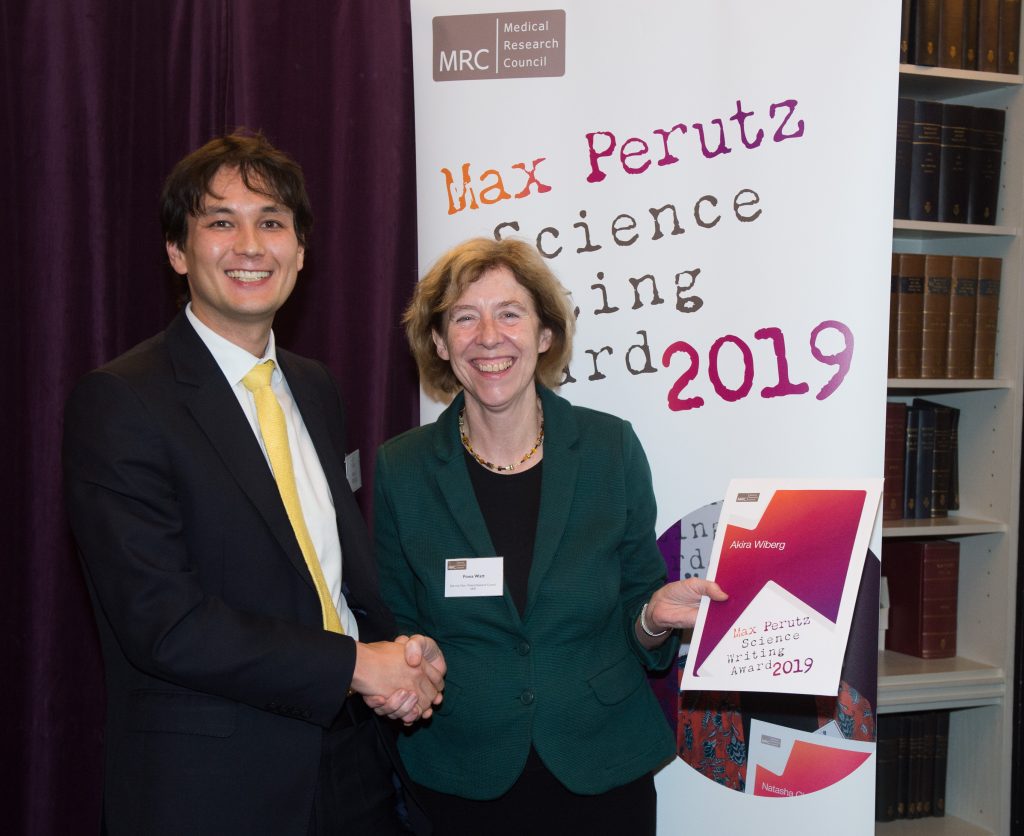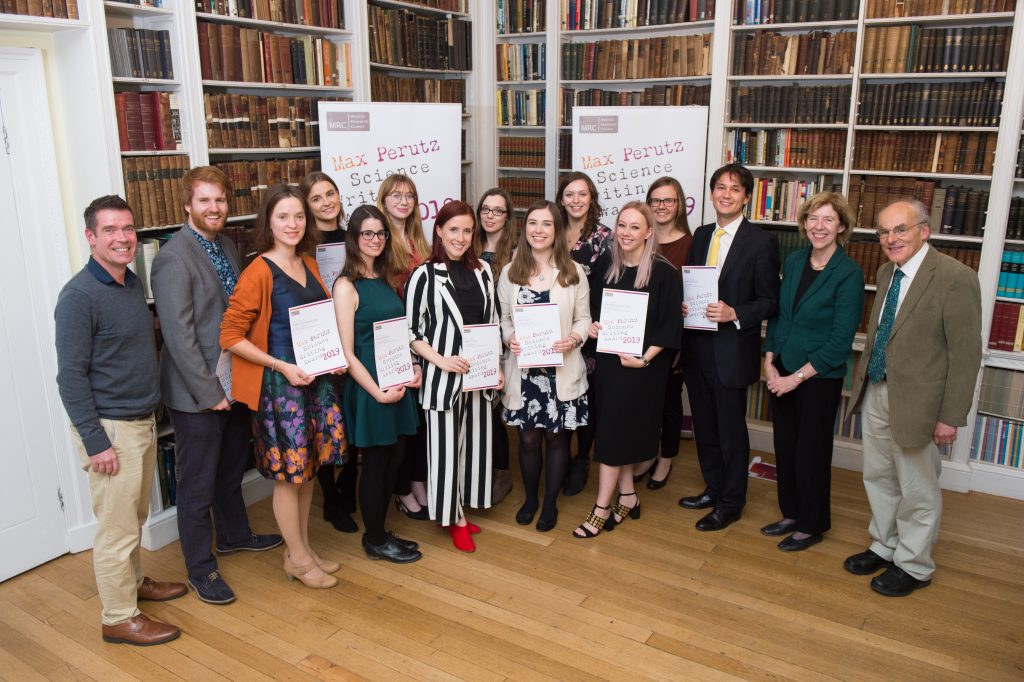The lifeblood of scientific research comes in the form of young people and the same goes for science engagement too, which is more important than ever given the remarkable impact of public-funded research on society, from gene editing to reproductive science.
That is why it is so appropriate to name the Medical Research Council’s annual science writing competition after Max Perutz, the distinguished essayist who helped set up Britain’s ‘Nobel Prize factory’, the Laboratory for Molecular Biology in Cambridge and, equally apposite, in 1962 shared the Nobel Prize for revealing the atomic structure of complex biological molecules, notably the haemoglobin that makes blood red (there’s a model in our collections).
With my fellow judges Prof Fiona Watt, MRC Executive Chair, and Andy Ridgway, Senior Lecturer in Science Communication at the University of the West of England, it was an honour and pleasure to judge the best of the 116 entries to the Max Perutz Science Writing Award 2019, which represents around ten per cent of council funded doctoral students in the 22nd year of the competition.
At a ceremony earlier this week in the Royal Institution, London, the winner of the 2019 prize was announced, MRC-funded doctoral researcher: Mr Akira Wiberg, of the University of Oxford, who received the first prize of £1,500 for his article: “Getting on your nerves“.

He was delighted, declaring: “It was unexpected, so a very pleasant surprise, and I’m very pleased that the disease I’m studying – carpal tunnel syndrome – has got a bit of publicity today because it’s very debilitating and important for society. I’m hoping to tread a career as a surgeon scientist. I’m currently a plastic surgery trainee but I want to carry on doing my clinical work alongside research and I think communicating my research with the public is very important.”
Runner-up Ms Erin Attrill, University of Exeter, received £750 for “The enemy of my enemy is my friend”. And highly commended, and awarded £400 was Ms Anna Beukenhorst, University of Manchester, who wrote “Smartphones for healthcare research: data at our fingertips”.
Congratulations to the other entries who made the shortlist this year:
- Imogen Birch, The Cardiff University Brain Research Imaging Centre: “Get some sleep, you’ll feel better in the morning”
- Peter Gawne, School of Biomedical Engineering & Imaging Science, Kings College London: “An optimist’s guide to radioactivity using medical imaging to develop and improve new treatments”
- Magda Mareckova, University of Oxford: “One in ten women suffers from endometriosis – can studying the endometrium cell by cell help us diagnose it?”
- Nora Schmit, School of Public Health, Imperial College London: “Back to the future: how reconstructing the past hepatitis B epidemic can help prevent liver cancer in the future”
- Amy Southern, MRC Harwell and University of Oxford: “Making sense of a sticky situation: finding the ‘glue ear gene’ in Down syndrome”
- Lauren Terry, University of Birmingham: “Senolytics – the anti-aging product you’ve never heard of”
- Elisabeth Trinh, University of Manchester: “Mixed up messages in the gut”
- Alice Waitt, University of Nottingham: “How to RECOGNeyes your attention”
- Katrina Wesencraft, The EPSRC and MRC Centre for Doctoral Training in Optical Medical Imaging, Centre for Biophotonics, University of Strathclyde: “Could a cell ‘invisibility cloak’ help cure diabetes?”

There is already a great deal of advice for budding science writers (for instance this, by me). Of all the factors that distinguished the top entries from the rest was that they worked harder to intrigue the reader, earning the right to take a deep dive into explanation, while too many entrants were preoccupied with trying to explain the background of their research to get the reader interested in the first place: the latter read more like Wikipedia entries.
Prof Fiona Watt, who chaired the judging panel this year and last, said: “Their articles represent the fantastic breadth of research we fund – from discovery research to clinical studies and development of new technologies. Topics include disease prevention, precision medicine and new ways to treat mental health conditions and tackle antimicrobial resistance.
“Using conversational language, relatable anecdotes and personal experiences, the writers grab the reader’s attention, explaining simply and clearly why their research matters. I’m proud to say that previous winners have gone on to win national science writing awards, give TED talks and become BBC presenters.”
Before the ceremony at the Royal Institution, the shortlisted entrants had the chance to attend a science writing masterclass led by Dr Claire Ainsworth, freelance journalist and science writer. The keynote speech of the evening was delivered by Professor Robin Perutz, who said that for his late father: “there was nothing more important than communicating the benefits of science and dispelling the misinformation that surrounds it. He would be thrilled that you as the MRC research students, are out there passing on the message and that the competition still bears his name.”
Next month, to engage new audiences with medical thinking down the ages, the Science Museum will unveil its Medicine: the Wellcome Galleries, which will transform the first floor of the museum, creating a magnificent new home for its medicine collections.
Roger Highfield is a member of the Medical Research Council.
